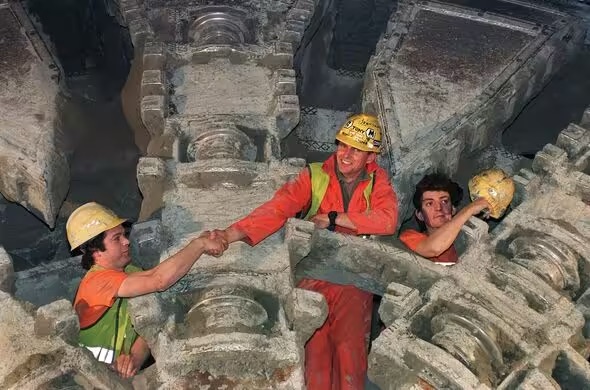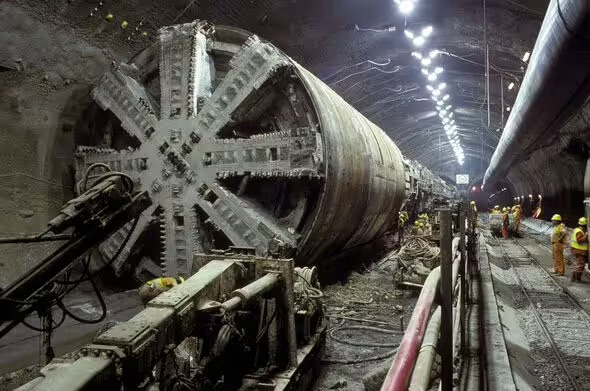The Channel Tunnel, Britain’s largest mega-project and a marvel of modern engineering, marks its 30th anniversary on May 6. Over the span of six years, 13,000 workers tirelessly constructed the tunnel, which now stands as a testament to 20th-century innovation. Connecting Folkestone, England, to Calais, France, the tunnel is celebrated as one of the seven wonders of the modern world, facilitating the rapid transit of freight and passengers across the English Channel in under an hour.
This iconic structure was the result of a collaborative effort between British and French engineers, fueled by a shared vision and overcoming numerous challenges, including financial hurdles and initial design setbacks. The project’s scale was immense, requiring 11 giant tunnel boring machines to carve through the seabed, each displacing 15 feet of chalk per hour, and enhancing economic ties between the UK and France.

The tunnel, affectionately known as the ‘Chunnel’, stretches over 30 miles and includes two railway tunnels and a service tunnel for maintenance, ensuring its longevity and safety. The decision to build a tunnel rather than a bridge was finalized in 1986, with construction commencing two years later. It was an audacious plan to link the UK and France beneath some of the world’s busiest shipping lanes.
In a historic moment in 1990, British and French workers met midway, symbolizing the connection between the two nations. The late Queen Elizabeth II, present at the opening, praised the project for blending French flair with British practicality, while then-French President Francois Mitterrand hailed it as a prelude to a technologically advanced Europe united in solidarity. Today, the Channel Tunnel remains a critical artery for European transport and a symbol of successful international cooperation.
